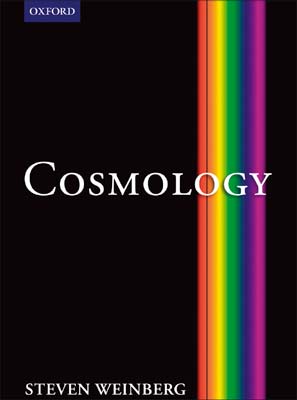By Steven Weinberg, Oxford University Press. Hardback ISBN 9780198526827, £45 ($90).

Those who think that a book on cosmology and gravitation overlaps with science fiction should probably not even try to flick through the latest treatise by Nobel laureate Steven Weinberg. Conversely, those who believe that gravitation, astrophysics and cosmology could offer fertile playgrounds for the analytical methods of theoretical physics will find in Cosmology a stimulating source of intellectual excitement. Finally, those who think that the physics of the early universe is a mere mathematical game with no observational relevance will also be disappointed, because observations play a central role in the book’s nearly 600 pages.
On the 30th anniversary of the discovery of neutral currents by Gargamelle, a round-table discussion took place in the main auditorium of CERN. Various Nobel laureates, including Weinberg, were present. Some of the questions from the audience addressed the worries of the particle-physics community, always anxious about novelty and excitement; some of Weinberg’s replies in that discussion reverberate in the preface of this book: “Today cosmology offers the excitement that particle physicists had experienced in the 1960s and 1970s”.
The treatise consists of 10 chapters organized around the three observational pillars of the standard cosmological paradigm, i.e. the physics of the cosmic microwave background (CMB), the analysis of supernova light-curves and the observations of large-scale structures. The first four chapters, following a didactical trail, cover the basic aspects of the standard paradigm, often dubbed the &Lamda;CDM scenario, where &Lamda; stands for the dark-energy component and CDM refers to the cold dark-matter component. The remaining six chapters cover, with more theoretical emphasis, the description (chapter 5), the evolution (chapter 6), the effects (chapters 7, 8 and 9) and the normalization (chapter 10) of inhomogeneities in Friedmann–Robertson–Walker universes.
Readers will not find the usual pretty pictures and maps that often decorate cosmology books. Instead the author adapts the style of theoretical particle physics to cosmology and gravitation: solid, analytical calculations and semi-analytical estimates are preferred over fully numerical results. Analytical methods are implicitly viewed as a mandatory step for an effective comprehension of natural phenomena. The latter aspect is evident in the discussion of the anisotropies in the CMB, where the author exploits some of his own results that have appeared over the past five years in Physical Review. The book contains eight assorted appendices, which are useful for both newcomers and experienced readers. The notations used by the author are unusual at times but may quickly become a standard.
While the relevant technical aspects of the presentation can only be fully appreciated after a careful reading, a clear message emerges with vigour after the first reading: atomic physics, nuclear physics, field theory, high-energy physics and general relativity all come together in the description of our universe. In other words, Cosmology provides a vivid example of the basic unity of physics, which is something to bear in mind during the decades to come.








